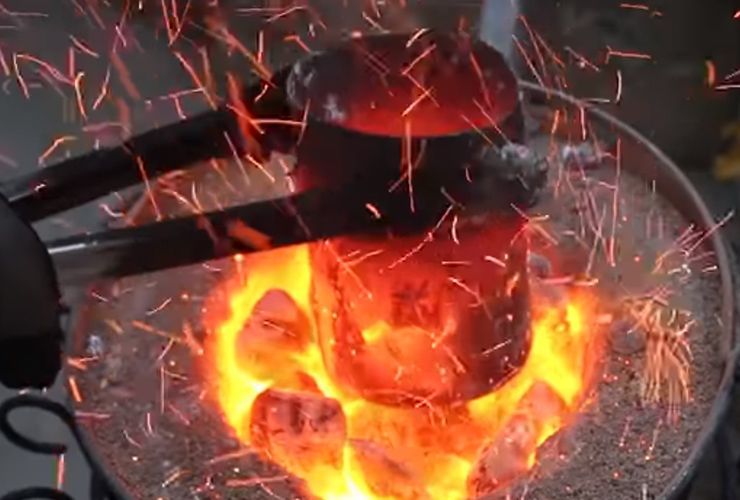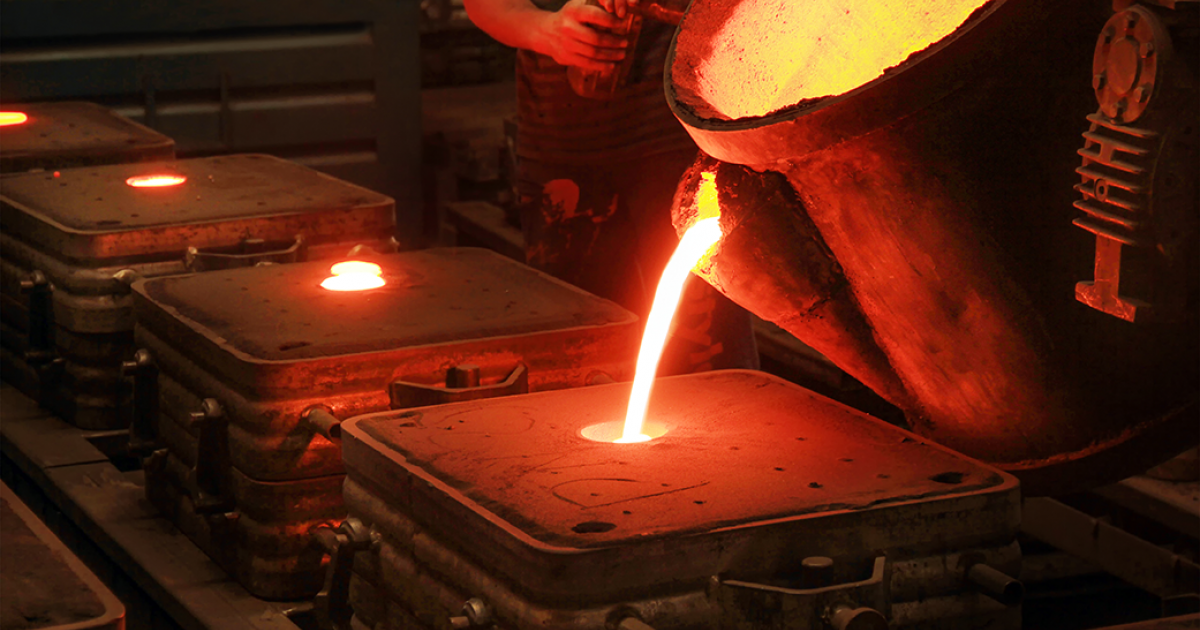Discovering the Role of Metal Foundry in Aerospace Manufacturing
Wiki Article
Comprehending Metal Casting Procedures: Technologies and Fads in the Foundry Sector
The foundry market is experiencing considerable makeovers driven by technical developments. Advancements such as 3D printing and man-made knowledge are reshaping metal casting procedures, improving effectiveness and precision. Sustainable techniques are acquiring grip, emphasizing the relevance of ecological responsibility. Additionally, the introduction of innovative products and automation is enhancing overall casting high quality. These advancements suggest a pivotal change in the market, raising inquiries concerning future instructions and ramifications for suppliers.Innovations in 3D Printing for Metal Casting
Current advancements in 3D printing modern technology have substantially transformed the landscape of metal casting. The combination of additive production methods has allowed the rapid production of complex patterns and mold and mildews that were previously hard or impossible to attain with standard methods. By using materials such as sand and metal powders, suppliers can produce detailed geometries that enhance style versatility and minimize material waste. This technology not just quickens the prototyping procedure yet additionally allows for the customization of components tailored to particular applications.
Moreover, 3D printing assists in shorter lead times, which is essential in industries requiring fast turnaround for parts. The modern technology likewise supports the production of light-weight frameworks, thereby enhancing energy efficiency in end items. Therefore, the foundry market is experiencing a change in the direction of even more sustainable practices, driven by the efficiency and precision provided by these modern 3D printing strategies in steel casting procedures.
The Function of Expert System in Precision Manufacturing
As sectors significantly embrace advanced production innovations, synthetic knowledge (AI) is playing a critical role in improving precision production procedures. AI algorithms analyze substantial datasets to maximize and identify patterns production specifications, leading to boosted precision and effectiveness. In steel casting, AI aids in predictive maintenance, reducing downtime by projecting equipment failings before they happen.AI-driven simulations allow makers to design the casting process, refining designs and minimizing flaws. Artificial intelligence strategies improve quality control by identifying abnormalities in real-time, thus guaranteeing that only items fulfilling strict specifications proceed via the assembly line.

Lasting Practices in the Foundry Market
Sustainability has arised as a crucial emphasis in the foundry sector, motivating manufacturers to take on methods that reduce ecological influence while preserving performance - Aluminum Foundry. One popular technique consists of the recycling of products, specifically metals, which significantly minimizes waste and power consumption. Foundries are progressively executing closed-loop systems, allowing for the reuse of sand and other casting products, therefore minimizing the requirement for virgin sourcesIn addition, energy-efficient modern technologies, such as electric furnaces, are obtaining grip, as they reduced greenhouse gas exhausts compared to typical techniques. Lots of foundries are discovering the usage of eco-friendly coverings and eco-friendly binders to lower harmful byproducts. Staff member training on sustainable practices has actually also ended up being necessary, fostering a culture of environmental duty within companies. On the whole, these lasting practices not only add to environmental preservation but additionally boost the lasting stability of the foundry sector in a significantly eco-conscious market.
Advancements in Materials for Improved Casting High Quality
With the constant evolution of the foundry sector, developments in products have actually become essential for enhancing casting top quality. Advanced alloys and composite products are significantly being used to boost mechanical homes and lower defects in castings. These products often supply superior strength-to-weight ratios and enhanced resistance to rust and wear, attending to the demands of contemporary applications.Additionally, the incorporation of nanomaterials is getting grip, enabling finer microstructures that cause enhanced surface finishes and dimensional accuracy. Aluminum Foundry. 3D printing modern technologies also contribute in creating intricate geometries with marginal waste, making it possible for making use of specific products that were previously testing to cast
The growth of eco pleasant binders and additives contributes to sustainable methods while maintaining high-grade end results. Collectively, these technologies not only enhance the performance of cast products yet likewise line up with the industry's change in the direction of sustainability and effectiveness.
Automation and Robotics in Metal Casting Procedures
Automation and robotics are revolutionizing steel casting procedures by enhancing operations and boosting precision. In contemporary foundries, robot systems are utilized for jobs such view it now as mold handling, pouring, and ending up, considerably minimizing human intervention. This not just lessens the risk of accidents yet likewise guarantees regular my response quality in production.Automation modern technologies, such as computer system numerical control (CNC) makers, help with detailed styles and intricate geometries that were formerly challenging to attain. Real-time information analytics make it possible for makers to optimize and keep an eye on procedures performance continually.
The combination of automation leads to enhanced productivity and effectiveness, enabling foundries to satisfy expanding market demands while minimizing preparations. As the market welcomes these developments, the labor force is additionally evolving, requiring new abilities to run and keep sophisticated machinery. Generally, the fostering of automation and robotics is a crucial trend shaping the future of metal casting processes.
Often Asked Questions
What Is the History of Metal Casting Methods?
Metal casting methods go back to old human beings, with evidence of bronze casting in Mesopotamia around 3000 BCE. Over centuries, methods developed considerably, incorporating advancements in products and technology, forming modern-day commercial practices.Exactly How Does Metal Casting Influence the Environment?
Metal casting significantly impacts the atmosphere through energy usage, exhausts, and waste generation. Innovations in lasting practices and technologies aim to minimize these impacts, promoting more ecologically friendly techniques within the market.What Security Steps Are Essential in Foundries?

What Prevail Defects in Metal Casting Products?
Usual issues in metal casting items consist of porosity, contraction, misruns, cool shuts, and surface flaws. These concerns occur from variables such as incorrect temperature level control, insufficient mold design, and contamination throughout the casting process.How Do Foundries Make Certain Quality Assurance in Casting Processes?
Shops execute extensive quality assurance see this page actions through routine assessments, standardized testing, process monitoring, and adherence to sector requirements. These practices aid identify flaws early, ensuring the stability and integrity of the last casting items.Advancements such as 3D printing and artificial knowledge are improving metal casting procedures, improving performance and precision. Current advancements in 3D printing technology have actually significantly transformed the landscape of steel casting. Automation and robotics are transforming steel casting procedures by enhancing procedures and enhancing precision. Metal casting techniques day back to old worlds, with proof of bronze casting in Mesopotamia around 3000 BCE. Common defects in steel casting products consist of porosity, shrinking, misruns, chilly shuts, and surface area blemishes.
Report this wiki page